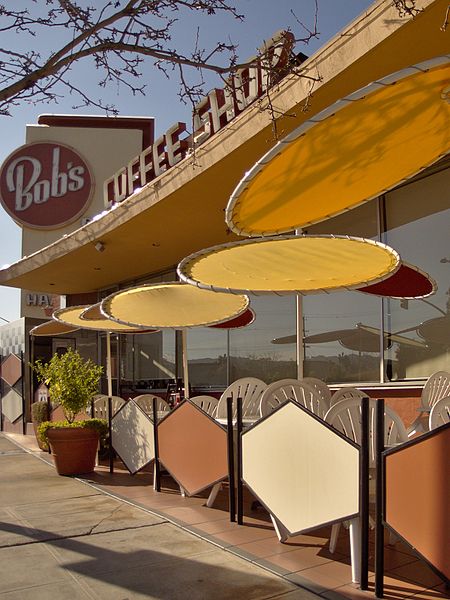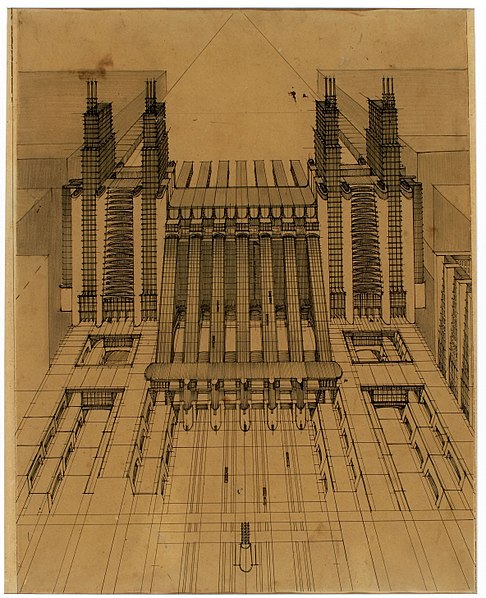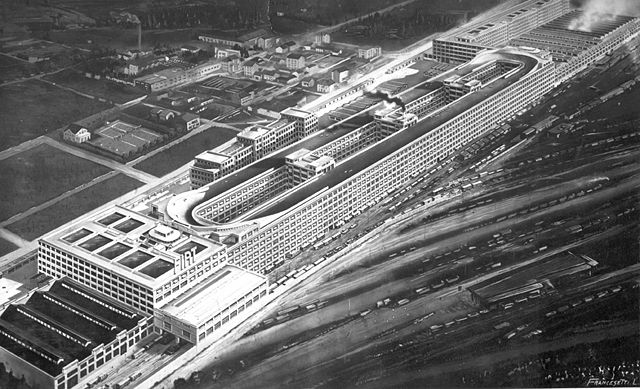Googie architecture is a type of futurist architecture influenced by car culture, jets, the Atomic Age and the Space Age. It originated in Southern California from the Streamline Moderne architecture of the 1930s, and was popular in the United States from roughly 1945 to the early 1970s.
Googie-style car wash
Classic Googie sign at Warren, Ohio drive-in
Patio tables at the Bob's Big Boy restaurant in Burbank, California
Johnie's Coffee Shop on Wilshire Boulevard, Los Angeles, designed by Armet & Davis
Futurist architecture is an early-20th century form of architecture born in Italy, characterized by long dynamic lines, suggesting speed, motion, urgency and lyricism: it was a part of Futurism, an artistic movement founded by the poet Filippo Tommaso Marinetti, who produced its first manifesto, the Manifesto of Futurism, in 1909. The movement attracted not only poets, musicians, and artists but also a number of architects. A cult of the Machine Age and even a glorification of war and violence were among the themes of the Futurists - several prominent futurists were killed after volunteering to fight in World War I. The latter group included the architect Antonio Sant'Elia, who, though building little, translated the futurist vision into an urban form.
Perspective drawing from La Città Nuova by Sant'Elia, 1914.
Lingotto factory in Turin. With its test track on the roof, it was recognized in 1934 as the first futurist invention in architecture
Civil Justice Centre, Manchester (2008) by Denton Corker Marshall, notable for its cantilevers and straight lines.
The San Francisco Marriott Marquis in San Francisco, California, a notable example of post-modern futurism, was designed by the architect Anthony J. Lumsden (1989). It is topped with a jukebox-shaped glass tower.








